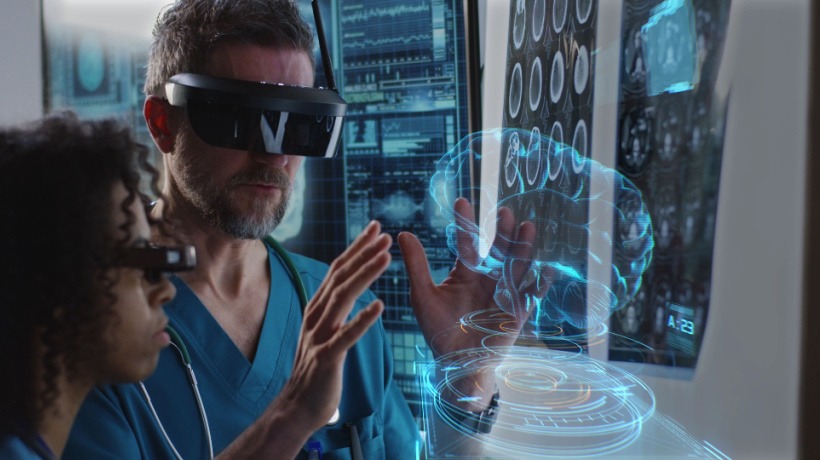Upcoming Technologies In eLearning
eLearning is transforming the Learning and Development space in all industries across the globe. As per the statistics, the global eLearning market is expected to reach $336.98 billion by 2026. Many global organizations shifted to eLearning when the pandemic hit to encourage continuous learning and increase employee engagement. As a result, eLearning developers and Instructional Designers are coming up with creative ways to advance learner performance and productivity.
Nowadays, an ideal eLearning is built to enable self-paced learning by having a responsive design. As per recent statistics, 58% of employees prefer self-paced learning [1]. It supports multiple learning styles and environments including SCORM (Sharable Content Object Reference Model) compliant and audio in multiple languages. Along with these features, most organizations today focus on including advanced technologies and elements to make eLearning compelling. Among many such advancements, a few emerging technologies that are going to rule the Learning and Development field across the globe are discussed further in this article.
Emerging Technologies That Will Rule Learning And Development
1. Artificial Intelligence (AI) In eLearning
To begin with definition of AI, it is the "ability of a digital computer or computer-controlled robot to perform tasks commonly associated with intelligent beings". Besides eLearning, it is a wide area of computer science that is being used globally to perform tasks that can be done with human intelligence.
With reference to eLearning, AI-based eLearning can perform tasks that mostly require human intelligence, such as voice recognition, multilingual content, and so on. Integrating AI with eLearning will enable an organization to personalize a learner’s learning journey and guide them through it. Organizations like Duolingo and Thinkster have AI-integrated eLearning. A few other uses include analyzing large amounts of data (learner responses to assessments), 24/7 support to learners’ questions or technical issues (virtual assistants), and suggesting additional or related resources. The usage of AI in eLearning is expected to double in the coming decade.
2. Augmented Reality (AR) And Virtual Reality (VR)
AR and VR are two technologies that are progressing rapidly. With AR, one can experience a combination of real-world elements and computer-generated elements. It includes real-world scenes around an individual, and lets them add digital elements to it. Examples of AR include Snapchat, the Pokemon Go game, and Google ARCore. On the other hand, VR includes computer-generated elements that are simulated to seem real. With VR, an individual interacts with an environment virtually. For example, one can put on VR goggles and reach Switzerland virtually, or put on a VR goggle and drive a car.
Integrating AR and VR into eLearning can enhance learners’ engagement and help them connect with real-world scenarios. As a result, knowledge retention and application will increase. These technologies can fit any learner, irrespective of age group and work across industries, such as corporate, education, and the public sector. It can take a learning experience to the next level and decrease the sense of isolation. For example, using AR in eLearning can help build advanced gaming quests and assessments, whereas VR can simulate real-life scenarios related to the content and increase the understandability of the content. These technologies are sure to dominate the eLearning world.
3. Gamification In eLearning
Adding gamified elements in eLearning is an effective content strategy to make it more appealing to the learner. In simple terms, gamification is when a course includes game-like elements that create curiosity and motivate learning. Gamification can be added to train professional and interpersonal skills, onboarding training, compliance training, and so on. Some examples of gamification include adding challenges in a training, earning badges at each level of the learning journey, and turning a course into a learning quest.
Gamification brings with it several advantages. First and foremost, it has the potential to turn complex, content-heavy topics into interesting and fun learnings. It gives learners a reason to stick to the training till the end. Today’s learners look for courses that enable them to solve real-world problems and gamification can ease this process. Karla Gutierrez talks about a simple three-step model to integrate gamification in eLearning proposed. While creating a particular challenge, she says to build tension at first, then build urgency, and create time constraints. She also mentions that learners should not be given an easy way out. This will help learners focus and understand. Most organizations today have already come up with gamified courses. In the coming decade, it is going to be an integral part of eLearning globally.
4. Other Technologies
The future of eLearning is sensational and the upcoming technologies are numerous. Besides the ones discussed above, below are various others that will add value to the Learning and Development department.
- Microlearning
This is the breaking down of lengthy content into small lessons that take less time. It can be in the form of video, audio, and illustration. It takes less cost and time to deliver and increases flexibility. - Mobile learning or mLearning
This refers to enabling the delivery of learning content on mobile devices. It is successful when the employees work remotely and wish to learn on the go.
Conclusion
To conclude, there is an increasing scope for the eLearning technologies discussed above, and most organizations have already started blending them in their workplaces. The industry is coming up with advanced technologies that promote learning and upskilling for each individual across industries.
References:
[1] The No. 1 Reason Employees Say They've Stopped Learning Is Because They Don't Have Time









